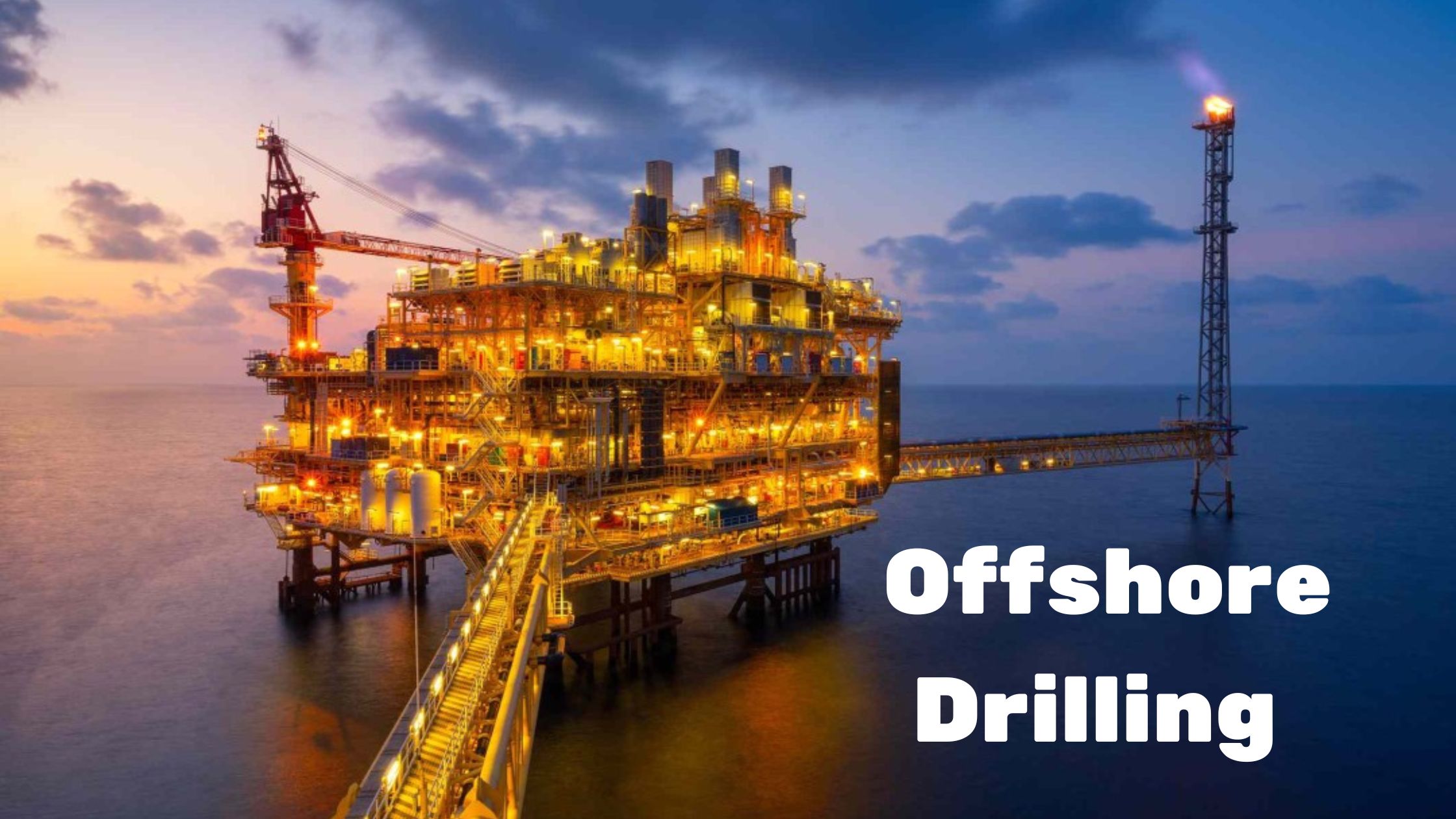Offshore Drilling is a vital process in the global energy industry, extracting valuable hydrocarbons from beneath the ocean floor. While it plays a crucial role in meeting energy demands, it also brings environmental and economic concerns. This comprehensive guide delves into the intricacies of offshore drilling, covering its techniques, benefits, risks, and the future of this dynamic industry.
What is Offshore Drilling?
Offshore drilling refers to the extraction of oil and natural gas reserves located beneath the seabed. It involves drilling wells through the ocean floor, typically in water depths ranging from a few meters to several kilometers. Offshore drilling is performed in oceans, seas, and large lakes, often far from the coast.
History of Offshore Drilling
Offshore drilling has a long history dating back to the late 19th century. The first offshore oil well was drilled in 1896 off the coast of California. However, it wasn’t until the mid-20th century that offshore drilling became a significant part of the global oil industry. The discovery of major oil fields in the Gulf of Mexico and the North Sea during the 1950s and 1960s marked a turning point, leading to the development of advanced drilling technologies and techniques.
Techniques and Technologies in Offshore Drilling
1. Jack-Up Rigs
Jack-up rigs are mobile drilling platforms used in shallow waters, typically up to 400 feet deep. These rigs have legs that can be jacked up or down to rest on the seafloor, providing stability during drilling operations.
2. Semisubmersible Rigs
Semisubmersible rigs are floating platforms used in deeper waters, up to 10,000 feet. They are anchored to the seabed and are more stable than jack-up rigs, making them suitable for rough sea conditions.
3. Drillships
Drillships are self-propelled vessels equipped with drilling equipment. They are used for drilling in ultra-deep waters, often exceeding 10,000 feet. Drillships offer flexibility in operations and can move quickly between drilling sites.
4. Subsea Drilling
Subsea drilling involves drilling wells directly on the seafloor, often in very deep waters. This technique requires the use of remotely operated vehicles (ROVs) and advanced subsea technology to manage the drilling operations and wellhead equipment.
5. Directional Drilling
Directional drilling is a technique used to drill wells at various angles, rather than just vertically. This allows access to multiple oil reservoirs from a single platform, increasing efficiency and reducing environmental impact.
Environmental Impact of Offshore Drilling
Offshore drilling has significant environmental implications. The risks of oil spills, which can devastate marine ecosystems, are a primary concern. The 2010 Deepwater Horizon disaster in the Gulf of Mexico highlighted the catastrophic consequences of offshore drilling accidents. Additionally, drilling operations can disturb marine life, contribute to noise pollution, and lead to habitat destruction.
To mitigate these risks, stringent regulations and safety protocols are in place, including blowout preventers (BOPs), regular inspections, and environmental impact assessments. Moreover, advances in technology continue to improve the safety and environmental stewardship of offshore drilling operations.
Economic Importance of Offshore Drilling
Offshore drilling is a critical component of the global energy supply, accounting for a significant portion of the world’s oil and gas production. It supports millions of jobs worldwide, from rig workers to engineers and supply chain managers. Offshore drilling also contributes to the economic development of coastal regions, generating revenue through taxes, royalties, and investment.
Key Offshore Drilling Regions
- Gulf of Mexico – One of the most productive offshore drilling areas, contributing significantly to U.S. oil production.
- North Sea – A major oil-producing region for the United Kingdom and Norway, known for its harsh weather conditions.
- Brazil – Home to vast offshore oil reserves, particularly in the pre-salt layer beneath the seabed.
- West Africa – Emerging as a significant offshore drilling region, with major discoveries off the coasts of Nigeria, Angola, and Ghana.
Challenges and Risks in Offshore Drilling
Offshore drilling faces numerous challenges, including:
- Technical Challenges: Drilling in deep water requires sophisticated technology and expertise, with the potential for equipment failures and accidents.
- Environmental Risks: As mentioned, the risk of oil spills and environmental damage is a significant concern.
- Economic Risks: Offshore drilling is capital-intensive, with high costs for exploration, production, and safety measures. Fluctuations in oil prices can impact the profitability of offshore projects.
- Regulatory Challenges: Offshore drilling is subject to strict regulations that vary by country. Compliance with these regulations can be complex and costly.
The Future of Offshore Drilling
The future of offshore drilling is closely tied to global energy demand and the transition to renewable energy sources. While there is increasing pressure to reduce reliance on fossil fuels, offshore drilling remains essential for meeting current energy needs. However, the industry is likely to see a shift towards more sustainable practices, such as carbon capture and storage (CCS) and the integration of offshore wind farms with oil and gas platforms.
Innovation and Sustainability
- Advanced Drilling Technologies: Innovations such as automated drilling systems, real-time data monitoring, and AI-driven decision-making are improving the efficiency and safety of offshore drilling.
- Environmental Initiatives: The industry is investing in cleaner technologies, including zero-emission rigs and reduced flaring practices, to minimize environmental impact.
- Renewable Energy Integration: Offshore platforms are being used to support renewable energy projects, such as floating wind farms, which can coexist with oil and gas operations.
Conclusion
Offshore drilling is a complex and essential part of the global energy landscape. While it provides significant economic benefits, it also poses environmental and technical challenges. As the world moves towards a more sustainable energy future, the offshore drilling industry will need to adapt, balancing the demand for hydrocarbons with the need to protect the environment.
By staying informed about the latest developments in offshore drilling, we can better understand its role in our energy future and the steps being taken to make it more sustainable.
Read More: The Future of Smart Speed Bump
Read More: High-Performance Concrete Build Business Case Value
